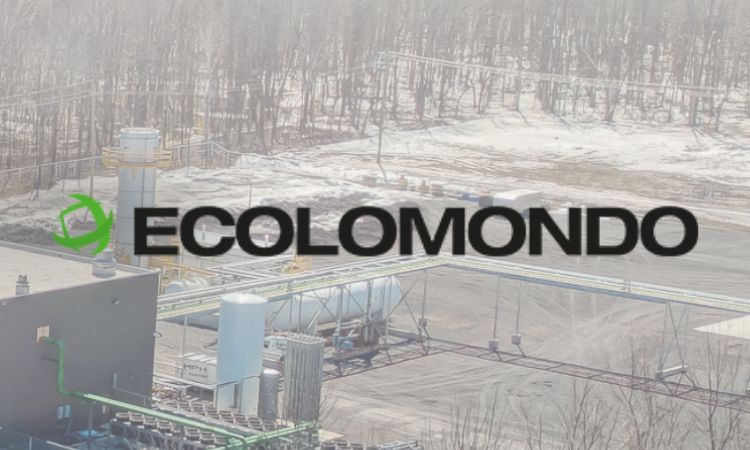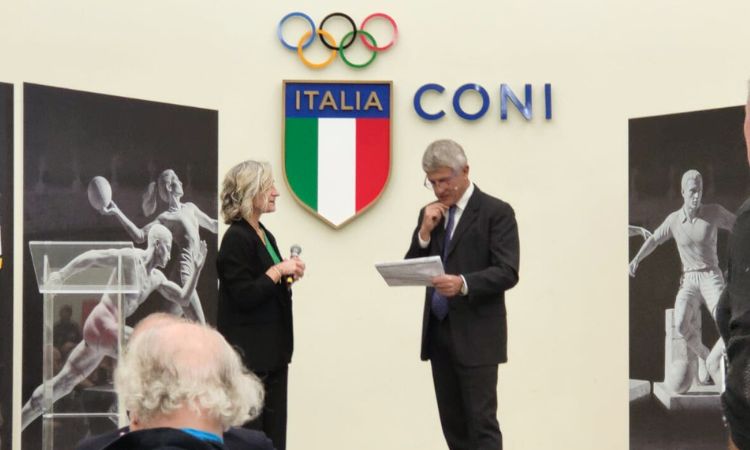Weibold Academy: Introduction to end-of-life rubber devulcanization
Month by month, our Weibold Academy series dwells deeper into the world of tire recycling, its products and applications. This time, we are shedding light on devulcanization of end-of-life tire rubber – a profitable opportunity in the tire recycling business. This article serves as an introduction to the subject and highlights aspects and steps important for newcomers to this business, such as feedstock pre-processing, devulcanization processes, laboratory testing and differences between rubber devulcanization and reclaiming.
Devulcanization is a method of potentially “upgrading” end-of-life tire rubber. Devulcanized rubber is a higher valued form of end-of-life rubber, since devulcanized material can be partly revulcanized and partially replace virgin rubber in specific compounds and applications, including tires. Currently, only a small number of devulcanization systems are operating on industrial scale. These are primarily small-capacity systems, which are devulcanizing rubber production rejects (NR, SBR, NBR, EPDM, Butyl, etc.) or rubber recovered from waste tires. There are different types of devulcanization technologies on the market; among them are: are chemical, purely mechanical, machinal with supercritical CO2, chemical/mechanical, microwave, ultrasonic and organic.
Devulcanization is the process of cleaving the monosulfidic, disulfidic, and polysulfidic crosslinks (C-S or S-S bonds) of vulcanized rubber. Devulcanized rubber can usually be revulcanized with or without the use of other compounds. It is important to carefully chose the right process. The different processes cause different diminution of some properties over those of the parent rubber. Ideally, devulcanization would yield a product that could serve as a substitute for virgin rubber, both in terms of properties and in terms of cost of manufacture.
The process of devulcanizing waste rubber can be broken down into two separate sequential and integrated steps:
- Size reduction (pre-processing stage). The end-of-life rubber is reduced in size so that it can be fed into the system that actually performs most if not all of the breaking of sulfur crosslinks.
- Devulcanization process, or the breaking of the sulfur crosslinks. The output product from the process is devulcanized rubber.
Feedstock pre-processing
Regardless of the specific type of devulcanization technology, devulcanization systems in general are composed of several subsystems. Common to most devulcanization technologies is the need for a finely sized, vulcanized rubber feedstock. This is not a standard rule. There are also devulcanization technologies which can accept feedstock as large as 10 mm. Equally important to size is the purity of the feedstock. The rubber must not be contaminated with other materials. Any metal or textile which is usually part of a tire must be separated.
Devulcanization processes
The below definitions do not represent all technologies which are currently used. Please contact us anytime for more information directly.
Chemical: chemical agents have been used to devulcanize scrap rubber since the 1960s. Most chemical devulcanization processes are batch processes that involve mixing size-reduced rubber particles and chemical reactants in a temperature- and pressure-controlled mixer. Generally speaking, rubber is fed into a mixer with a devulcanizing agent and heated. Once the design reaction time has elapsed, the contents are then rinsed, filtered, and dried to remove any remaining unwanted chemical components. The product can then be bagged or otherwise processed for resale. Various chemical agents have been used in the chemical devulcanization processes developed over the years. The agents include petroleum-based solvents (for example, toluene), thiol-amine reagents, hydroxide, disulfide compounds, or chlorinated hydrocarbons. With some chemical agents, a catalyst is also used to promote the desired reactions.
It is not very easy to differentiate purely chemical devulcanization processes from reclaim processes.
Mechanical: mechanical devulcanization is achieved through the repeated deformation of rubber particles under specific conditions of temperature and pressure.
One mechanical process implemented by Toyoda Gosei (TG) utilizes a “modular screw-type reactor” to manipulate and stress the rubber until it is plasticized and then ultimately devulcanized (Fukumori et al., 2002). By manipulating screw configuration and rotational speed, and processing temperature, researchers are able to control the duration of the treatment. In this way they can, to some extent, control the properties of the devulcanization.
Ultrasonic: in this type of devulcanization system, size-reduced rubber particles are loaded into a hopper and are subsequently fed into an extruder. The extruder mechanically pushes and pulls the rubber. This mechanical action serves to heat the rubber particles and softens the rubber. As the softened rubber is transported through the extruder cavity, the rubber is exposed to ultrasonic energy. The resulting combination of heat, pressure, and mechanical mastication is sufficient to achieve varying degrees of devulcanization.
Microwave: microwave technology has also been proposed to devulcanize waste rubber but did not gain any market shares so far. This process applies the heat energy very quickly and uniformly on the waste rubber. However, any vulcanized rubber used in the microwave process must be sufficiently uniform in structure so that the microwave energy can be absorbed at a rate adequate to generate the heat necessary for devulcanization.
Importance of laboratory testing
All of the properties mentioned in the preceding paragraphs are critical to how well a devulcanized rubber can be used as a complete or partial substitute for virgin rubber. Therefore, a competent rubber laboratory should test the devulcanized rubber to characterize these properties and determine what compound changes are needed to effect the desired cure, provide the desired properties both for processing and for the cured compound, and provide adequate protection against the effects of oxygen and ozone.
Another critical area of laboratory testing is the determination of how the addition of a proportion of devulcanized rubber to virgin rubber affects the properties of the final blend. For example, how much devulcanized rubber, with lower mechanical properties, can be added before the mechanical properties of the blend are significantly reduced? This will determine the practical limits on the levels of devulcanized rubber that can be used in various applications.
Testing will also help to determine the economic viability of using devulcanized rubber in these applications. Some compounds demonstrate substantial reduction in tensile strength with the addition of devulcanized rubber. In other cases, little or no reduction in properties occurs.
We do not recommend any of the previously described methods at the given moment. Virgin rubber prices are too low and the industry experts are indecisive for its outlook.
Differences between rubber devulcanization and reclaiming
To dive into the topic, please read the original source of the information highlighted below – the article by Professor Costas Tzoganakis from Tyromer published in the Rubber World Magazine in February 2019 (Volume 259, No. 5).
There are different methods of devulcanization, and rubber reclaiming is often mistaken for, or used synonymously with devulcanization. But unlike rubber reclaiming, there is devulcanization technology available that can preferentially break sulfur links in vulcanized rubber without destroying the integrity of rubber molecules. Properly devulcanized, much of the excellent properties of rubber are retained. This devulcanized rubber can be used in meaningful amounts in a wide variety of high-end and critical applications, including new and retreaded tires.
Reclaimed rubber has been defined as vulcanized rubber treated by a combination of heat, chemical agents and intense kneading to give a material with essentially its pre-vulcanized plasticity, which is useful as a rubber compounding material. Research activities on rubber reclaiming date back to the mid 1800s, shortly after vulcanization of rubber with sulfur was patented by Charles Goodyear. Since then, various reclamation techniques have been developed, and in-depth reviews have been previously published. Reclaiming of rubber involves softening and swelling of rubber and the reduction of its viscosity through scission reactions induced by shear deformation and chemical action, and the role of processing conditions on reclaimed rubber properties has been reviewed early on. Through reclaiming, scission of several types of bonds such as carbon-carbon (CC), carbonsulfur (C-S) and sulfur-sulfur (S-S) is achieved. However, the reduced viscosity and recovered plasticity of reclaiming methods is primarily due to the shortening of polymer molecules by C-C scission reactions. Today, conventional reclaiming processes have been virtually eliminated in North America primarily due to concerns with the disposal of the chemical solutions used.
Devulcanization of rubber involves the destruction of sulfur chemical crosslinks in a vulcanized rubber. ASTM STP183A defines devulcanization as ‘‘a combination of depolymerization, oxidation and increased plasticity’’. However, devulcanization is understood to be the reversal of the vulcanization process, that is the cleavage of chemical bonds formed during vulcanization. Bonds formed during sulfur vulcanization are C-S and S-S, and only such bonds should be cleaved during devulcanization. Therefore, devulcanization is the process of cleaving the mono-sulfidic (C-S-C), di-sulfidic (C-S-S-C) and poly-sulfidic (C-Sx-C) crosslinks of vulcanized rubber, while leaving intact the backbone of the rubber polymer molecules. In view of these definitions, the majority of physical and chemical methods converting waste rubber into reusable rubber should be classified as reclaiming rather than devulcanization. These methods involve random scission of chemical bonds as opposed to targeted scission of sulfur crosslinks. Achieving devulcanization through these various methods in research labs at low throughput has been possible, but the true test of viability is scaling to commercial output levels that match the needs of large manufacturers.
Important differences between devulcanization and reclaim are the no effect level and final applications of the rubber. For example, in a tire tread compound, some companies claim that their devulcanized rubber can usually be added at 10-20% with excellent results, compared to 4-8% with reclaimed rubber or modified crumb rubber such as MRP. Optimization is important; however, in some cases, devulcanized rubber compounds can simply be dropped into a masterbatch compound with great results.
Full-fledged market researches on end-of-life rubber devulcanization
To learn more about devulcanization, technologies, markets and business opportunities in this field, please contact Weibold directly or consider our specialized consulting services.
Weibold is the expert in tire recycling and pyrolysis consulting, who works with both new and established tire recycling companies, waste management authorities and regulatory bodies since 1999 and helps them build successful businesses. Weibold has worked with over 200 companies worldwide and has truly international portfolio of projects. Among other services, our portfolio includes market researches, feasibility studies, bankable business plans, technology evaluation researches on tire recycling and pyrolysis.
Learn how we can help you build successful tire recycling business or help you design regional tire collection system! Write us at sales@weibold.com or call +43 1 997 10 50.
Weibold is an international consulting company specializing exclusively in end-of-life tire recycling and pyrolysis. Since 1999, we have helped companies grow and build profitable businesses.









